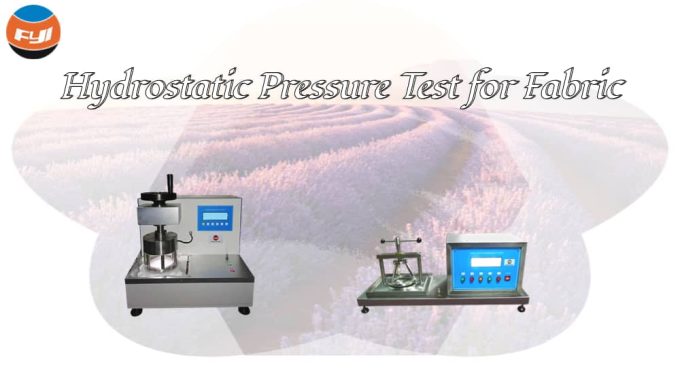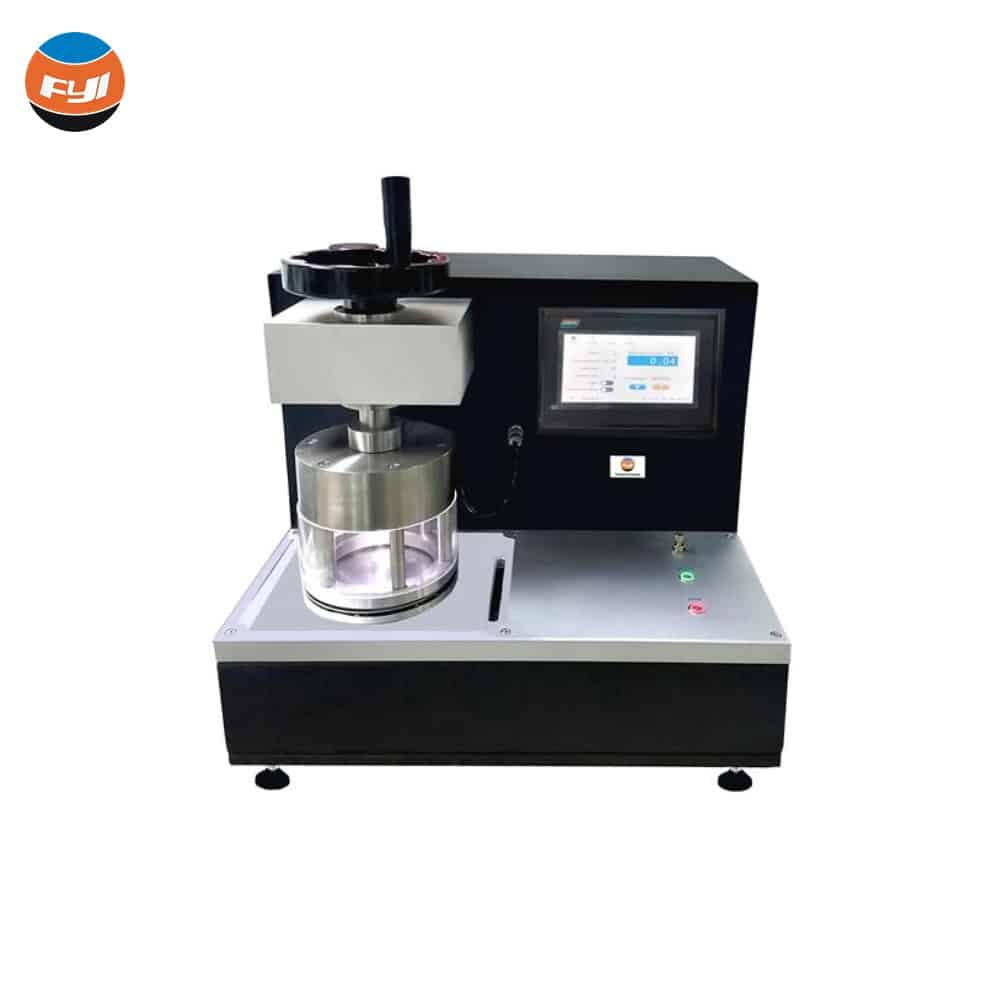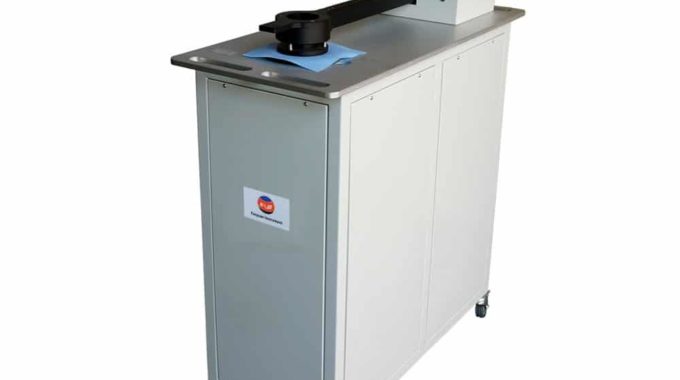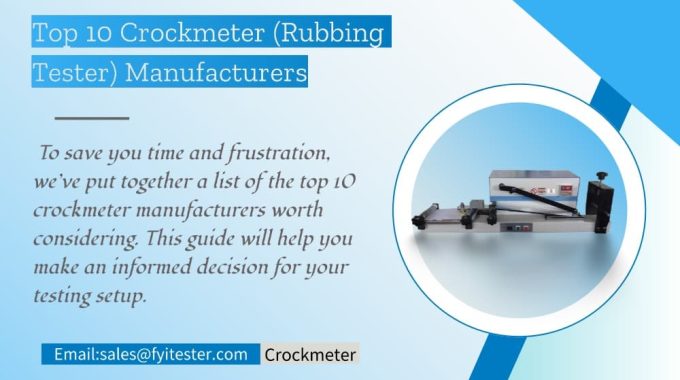
Hydrostatic Pressure Test for Fabric
The hydrostatic pressure resistance index is one of the most important indicators of waterproof and breathable fabrics. Hydrostatic pressure refers to the resistance water encounters as it passes through fabric. Under standard atmospheric pressure conditions, the fabric is subjected to continuously rising water pressure. Until water droplets seep out from the back of the fabric, at this time, the measured water pressure value is the hydrostatic pressure. The more hydrostatic pressure a fabric can withstand, the better its waterproofness or resistance to leakage.
The units expressing hydrostatic pressure are N/m2,kPa and water column height m. The conversion relationship is that the height of the water column of 1m is equal to 9. 82 kPa.
Contents
Hydrostatic pressure test method
Classification by testing method
Field test. Field testing is expensive and time-consuming, usually taking about half a year. During the experiment, the waterproofness of the fabric after waterproofing and moisture-permeable finishing was regularly tested to learn about its durability. Although this method takes a long time and costs a lot, the test data is accurate.
Simulation test. An environmentally controlled room is required for simulation testing. An artificial rain tower is installed in the room, which can discharge water from a height of 10 m to the human model like a heavy rain at a flow rate of 450L/m2·h. Water droplets with a diameter of about 5 mm are sprayed out from 2000 holes on the top. Its speed is about 40 km/h, which is 90% of the maximum speed of raindrops in the air. By adjusting it, showers of varying severity can be simulated over an area of approximately 2m2. The surface of the mannequin is packed with sensors designed to determine the time and location of final water penetration, among other indicators. This testing method takes much less time than field testing and can be completed within a few days, but the cost is higher.
Laboratory testing. Compared with field testing and simulation testing, laboratory testing costs less, takes less time, can obtain relative results, and is more practical.
Classified by pressurized form
Dynamic method. Continuously increase the water pressure on one side of the fabric, and measure the hydrostatic pressure that the fabric can withstand until a specified number of water droplets appear on the other side of the fabric.
static method. Maintain a constant water pressure on one side of the fabric and measure the time it takes for water to penetrate from one side to the other.
Classified by hydrostatic pressure value
Low voltage test method. Standard test methods are:
Canadian Standard (CGSB)-4.2No. 26.3 “Hydrostatic Pressure Test for Determination of Water Permeability Resistance of Textile Fabrics”;
International standard ISO 1420 “Hydrostatic pressure test for determination of water resistance of rubber and plastic coated fabrics”;
Japanese Industrial Standard JIS L-1092 “Hydrostatic Pressure Test A for Water Resistance of Textiles”;
American Association of Textile Chemists and Colorists standard AATCC 127 “Hydrostatic Pressure Test for Water Resistance of Textiles”;
American Standard Test Method (or American Society for Testing and Materials Standard) ASTM D751- 1995 “Determination of Water Resistance of Coated Fabrics B” and other methods.
High voltage test method. Standard test methods are:
High pressure method in FZ/T 01004-1991 “Hydrostatic Pressure Test for Determination of Water Permeability Resistance of Coated Fabrics”;
ISO 1420-1987 “Hydrostatic pressure test for determination of water resistance of rubber and plastic coated fabrics”;
JIS L-1092 “Textile Water Resistance Hydrostatic Pressure Test B”;
ASTM D751-95 “Determination Procedure A for Water Resistance of Coated Fabrics”;
U.S. Federal Standard Test Methods FED-STD-191A 5512 and ASTM D3393 “Standard Description of Waterproofness of Coated Fabrics” and other methods
Hydrostatic pressure tester
The YG812 digital water permeability tester uses the spray method to measure the permeability of materials. Clamp the sample in the fixture of the test bench, and inject a certain amount of water through the water inlet pipe from above. The water will penetrate through the sample to the bottom of the test bench, and a certain amount of water will flow out of the outlet pipe at the bottom. Based on the amount of water flowing out of the outlet pipe and the penetration area of the sample, the permeability coefficient of the material can be calculated to determine the water permeability performance of the material.
Hydrostatic pressure with range from 0 to 200kPa;Pressure applied on specimen pass through a buffer device to effectively avoid over-pressured; There is a calibration port in control box . If need to calibration the machine ,Firstly open the back cover of contraol box and pull out the plug .

Factors affecting the water pressure resistance of fabrics
- Tightness of fabric. The increase in the distance between yarns will directly affect the water pressure resistance. Generally, the tighter the fabric structure, the better its water resistance.
- The size of the pore size of the coating film. The larger the pore size of the membrane, the worse the hydrostatic pressure resistance of the coated fabric.
- The size of the contact angle 0. When 0>90, the fabric has water-repellent properties. At this time, as 0 increases, the water pressure resistance value of the fabric also increases accordingly.
- Coating thickness. If the coating is too thin, the coating agent will not easily form a continuous film on the surface, and the water pressure resistance of the coated fabric will be reduced; if the coating is thick, the water pressure resistance of the fabric will increase.
- Thickness of fabric. The thicker the fabric, the greater the moisture resistance and the greater the water pressure resistance value.
- Thickness of yarn. For compact fabrics made of fibers with good hygroscopicity, the yarn radius is reduced due to the existence of capillary effect. It can improve the water resistance of fabrics.
- The performance of warp and weft yarns. Under the action of water pressure, elastic warp and weft yarns are easy to elongate, resulting in the formation of gaps between adjacent warp and weft yarns, through which water droplets can easily penetrate, reducing the water pressure resistance of the fabric.
- Coating quality. The entire cloth surface is required to be uniform and have a certain degree of fastness. The better the coating quality, the better the water penetration resistance.
Comments are closed.
:The-most-valuable-guidance-680x380.jpg)


Every paragraph of this article is a treasure trove of information – you’ll find something valuable in each one.
Every paragraph left me wanting more, as the author skillfully teased out new perspectives and insights.
Hey, if you haven’t read this article yet, you’re missing out on some truly enlightening content.